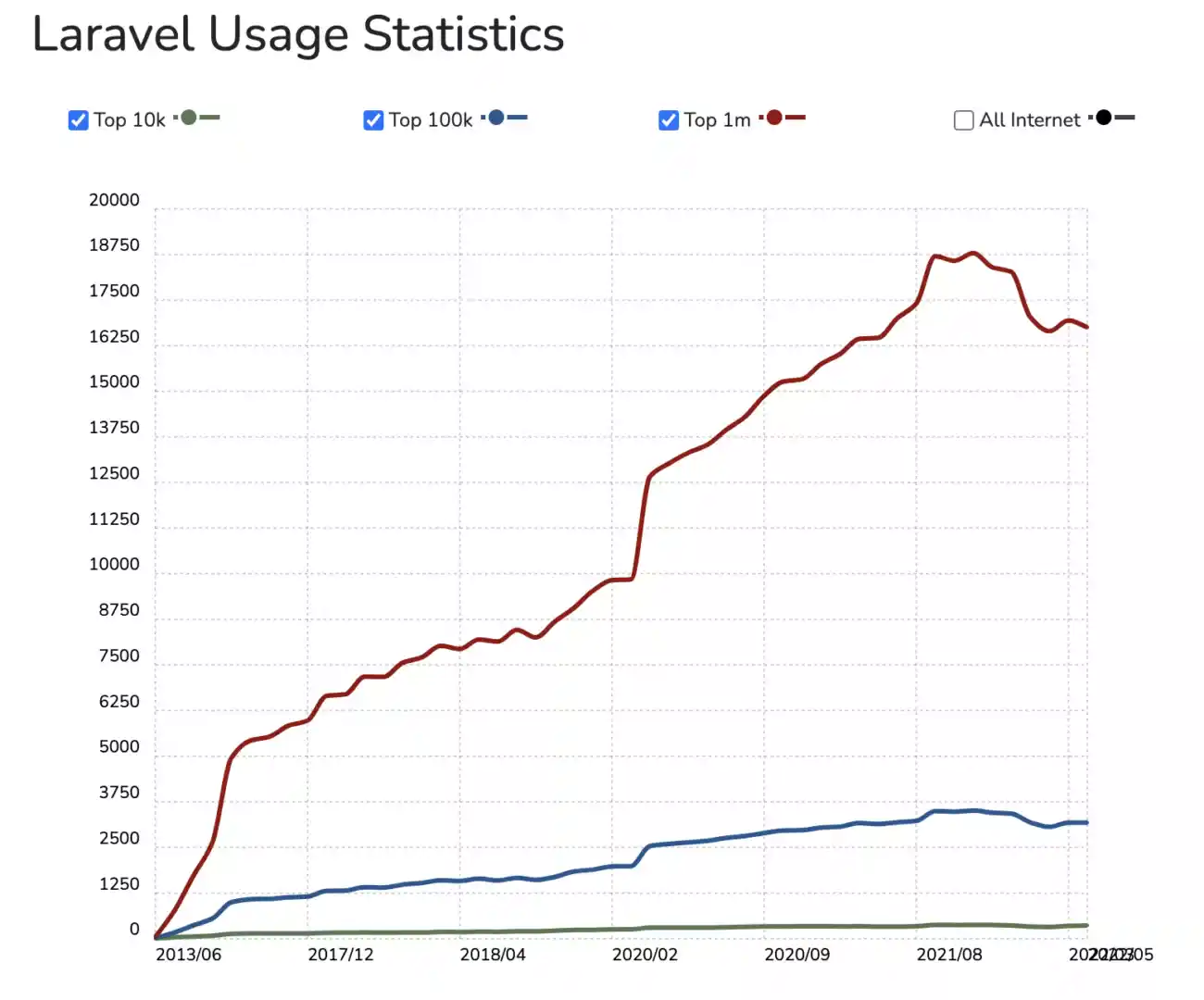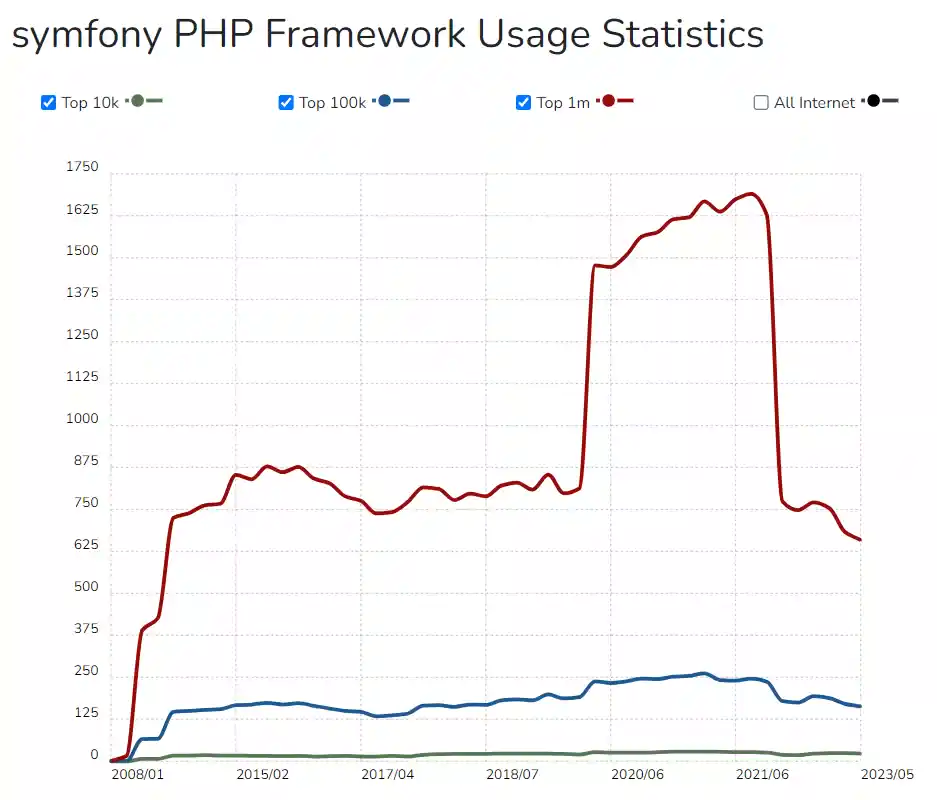Table of Contents
Introduction
When it comes to building your online presence, selecting the right framework is like choosing the blueprint for your digital masterpiece. Among the array of options available, Laravel vs Symfony stands tall as two leading contenders in the world of web development. But which one is the best fit for your business? Let’s embark on a journey to explore the nuances of Laravel vs Symfony, helping you make an informed decision that aligns with your unique business needs.
Understanding Laravel
Imagine Laravel vs Symfony, Laravel as the craftsman who effortlessly weaves together pieces of code to create a masterpiece. Laravel has earned its stripes for its clean syntax, developer-friendly environment, and vast array of tools at your disposal. It’s like having a magic wand that simplifies web development and empowers you to craft stunning applications with ease.
Key Features of Laravel
- Eloquent ORM: Laravel’s Eloquent ORM is like your trusted assistant in managing data. It provides a smooth interface for interacting with databases, allowing you to focus on shaping your application’s logic without getting bogged down in database intricacies.
- Blade Templating Engine: Picture Blade as your artistic muse, guiding you in creating beautiful, reusable views for your application. With its intuitive syntax and powerful features, Blade makes frontend development a breeze, enhancing both the aesthetics and functionality of your web pages.
- Laravel Mix: Laravel vs Symfony Mix is your secret weapon for organizing and optimizing front-end assets. It simplifies asset compilation, versioning, and dependency management, streamlining the frontend development process and ensuring a seamless user experience.
- Artisan Console: Meet Artisan, your trusty sidekick for handling mundane tasks with grace and efficiency. Whether it’s generating code, running migrations, or clearing caches, Artisan automates repetitive tasks, freeing up your time for more creative pursuits.
- Laravel Horizon and Telescope: Think of Horizon and Telescope as your vigilant guardians, keeping a watchful eye on your application’s performance and health. Horizon provides insights into queue management, while Telescope offers invaluable debugging tools to keep your application running smoothly.

Exploring Symfony
Now, let’s turn our attention to Symfony, the versatile toolkit that empowers developers to build robust, customizable applications tailored to specific requirements. Symfony is like a treasure trove of modular components, each serving a unique purpose and contributing to the framework’s flexibility and scalability.
Key Features of Symfony
- Symfony Components: Symfony’s modular architecture is akin to a LEGO set, allowing you to mix and match components to create your ideal application. From handling HTTP requests to managing database interactions, Symfony provides a comprehensive toolkit for building sophisticated web applications from scratch.
- Twig Templating Engine: Enter Twig, the elegant wordsmith that transforms your ideas into beautiful, semantic HTML. Twig promotes code clarity and maintainability by separating presentation logic from application logic, making your templates a joy to work with.
- Doctrine ORM: With Doctrine by your side, database interactions become a breeze. Doctrine simplifies the process of defining entity mappings, executing complex queries, and managing database transactions, empowering you to focus on building robust, data-driven applications.
- Console Component: Symfony’s Console component is like your personal assistant in the command-line realm. Whether it’s running cron jobs, batch processing data, or building CLI utilities, Symfony Console provides a flexible and standardized interface for interacting with the command line.
- Flexibility and Modularity: Symfony’s modular architecture offers unparalleled flexibility and extensibility, allowing you to tailor your application to meet specific requirements. By embracing best practices and industry standards, Symfony promotes code reusability and maintainability, ensuring your application stands the test of time.

Difference Between Laravel vs Symfony
| Aspect | Laravel | Symfony |
| Ease of Use | Beginner-friendly, intuitive syntax | Requires familiarity with object-oriented principles |
| Flexibility | Opinionated framework with fewer configuration options | Modular architecture allows for greater customization |
| Performance | Suitable for small to medium-sized applications | Excels in handling high-traffic, enterprise-level projects |
| Community Support | Active community with extensive documentation | The steeper learning curve, ideal for experienced developers |
| Learning Curve | Low learning curve, suitable for newcomers | Regular updates and LTS versions are available |
| Built-in Features | Rich set of out-of-the-box functionalities | Allows cherry-picking of components based on project needs |
| Scalability | Scales well for moderate traffic and data volume | Built for scalability, handles large-scale projects efficiently |
| Long-Term Maintenance | Regular updates and LTS versions available | Stable releases with long-term support and backward compatibility |
| Best Suited For | Startups and small to medium-sized projects | Complex, enterprise-level applications with evolving requirements |
5 Things to Consider When Choosing Between Laravel vs Symfony
When deciding between Symfony and Laravel as a PHP framework, you should keep some guidelines in mind to reduce the danger of making a mistake. Here are some of them.
1) Project requirements.
What type of business you have, its major needs, type, target audience, location, and so on are the primary considerations when determining the appropriate project requirements. It clarifies the do’s and don’ts of the web development process, hence determining the framework.
2) Project Size
As previously said, the project size has a greater influence on the selection process. Laravel vs Symfony, Laravel is typically recommended for small and medium-sized businesses (SMBs), but Symfony can manage large and high-investment projects.
3) Business Goals
Laravel vs Symfony, Laravel is ideal for rapid development and short-term commercial objectives. Symfony, on the other hand, is a better fit for long-term business objectives and large-scale audience-capturing websites.
4) Developer Skillset
Laravel is a simple, beginner-friendly framework that requires little programming expertise. Whereas Symfony is more sophisticated and requires a longer learning curve to manage object-oriented programming and other advanced technicalities.
5) Time Frame
The project’s completion timeframe simplifies your overall framework finalisation process. Laravel vs Symfony, Laravel is better suited for rapid development and website deployment. On the other hand, Symfony demands more time to complete the final output.
To make the best decision, you must carefully consider all of the factors. If you are still perplexed, the analysis below will undoubtedly provide you with an acceptable solution.
Choosing the Right Framework for Your Business
Now that we’ve delved into the realms of Laravel and Symfony, let’s unravel the factors that should guide your decision-making process.
Project Requirements
- Laravel: If you’re embarking on a journey to bring your startup idea to life or crafting a small to medium-sized application, Laravel is your trusted companion. Its simplicity, out-of-the-box functionality, and rapid development capabilities make it the perfect choice for getting your project off the ground quickly.
- Symfony: For those venturing into the realm of enterprise-level applications or tackling complex projects with evolving requirements, Symfony is your steadfast ally. Its flexibility, scalability, and adherence to industry standards make it the framework of choice for building robust, future-proof applications.
Development Team Expertise
- Laravel: If your team consists of developers familiar with PHP and eager to dive into web development, Laravel is the gateway to unleashing their creativity. Its intuitive API design, comprehensive documentation, and vibrant community ensure a smooth learning curve and foster collaboration.
- Symfony: For seasoned developers with a penchant for software architecture and design patterns, Symfony is a playground of endless possibilities. Its extensive configuration options, dependency injection container, and event dispatcher provide a canvas for crafting elegant and maintainable applications.
Scalability and Performance
- Laravel: Whether you’re catering to a growing user base or preparing for future expansion, Laravel has your back. Its built-in caching mechanisms, queueing system, and optimization techniques ensure your application scales gracefully to meet the demands of your audience.
- Symfony: When performance is non-negotiable and scalability is paramount, Symfony rises to the occasion. Its lightweight architecture, efficient request handling, and caching strategies enable your application to handle high traffic and complex workflows with ease.
Long-Term Maintenance
- Laravel: With Laravel’s commitment to long-term support and regular updates, you can rest assured that your application is in good hands. Its LTS releases provide stability and compatibility, allowing you to focus on growing your business without worrying about deprecated features or security vulnerabilities.
- Symfony: Symfony’s dedication to stability, backward compatibility, and adherence to standards ensures your application stands the test of time. Its predictable release cycle and extensive documentation make maintenance a breeze, giving you peace of mind as your application evolves.
Conclusion
In the realm of web development, the choice between Laravel vs Symfony is not about finding a winner but rather selecting the tool that best aligns with your vision and goals. Whether you opt for the simplicity and agility of Laravel vs Symfony, Laravel or the flexibility and scalability of Symfony, both frameworks offer a wealth of features and capabilities to bring your ideas to life.
By carefully evaluating your project requirements, considering your team’s expertise, and weighing the strengths and weaknesses of each framework, you can embark on a journey of digital innovation with confidence. Whether you’re building a startup from the ground up or revolutionizing an enterprise-level application, Laravel vs Symfony are your trusted companions on the path to success. So, choose wisely, embrace creativity, and let your digital masterpiece unfold.
FAQ
1. Which is better Laravel vs Symfony?
Laravel is the ideal PHP framework for web development tasks on a smaller scale, while Symfony is a perfect option for working on long-term, complex web development projects.
2. Can I use Symfony in Laravel?
Symfony components can serve as great code examples and they are used in a lot of open-source projects such as Drupal, phpBB, and Codeception. In fact, Laravel itself uses no less than 14 Symfony components. Understanding the Symfony framework thus gives you many benefits when working with other projects.
3. Is Symfony still being used?
However, Symfony is still widely used because it’s good for large projects, and heavy web apps need more memory and time to work.
4. How fast is Laravel vs Symfony?
According to ThinkMobiles test results, websites built with Laravel are claimed to load in approximately 60 milliseconds, but websites built with Symfony are estimated to load in approximately 250 milliseconds.